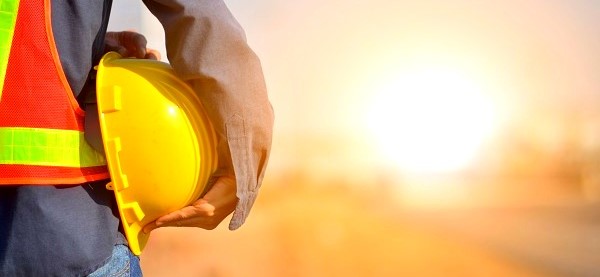
New research highlights dosimetric testing and wearable technology
Skin cancer is a serious issue for outdoor workers around the world, especially for those with fair skin. The number of skin cancer cases among these workers has been increasing, which highlights a critical public health problem. A new study by dermatology researchers highlights the increased focus on occupational dermatology as well as preventive measures being tested by researchers.
Understanding the risk
Solar ultraviolet radiation (UVR) is a major cause of skin cancer. There are two types of UVR: UV-A and UV-B. Both types can penetrate the skin and cause sunburns, DNA damage, premature aging, and eventually skin cancer. UV-B is especially linked to non-melanoma skin cancers (NMSC), like basal cell carcinoma and squamous cell carcinoma. Unlike melanoma, which can have genetic causes, NMSC is largely preventable with proper sun protection measures.
Occupational impact
Outdoor workers, such as those in agriculture, construction, and forestry, are exposed to significant amounts of UVR during their daily routines. This prolonged exposure means they are much more likely to develop skin cancers compared to people who work indoors. Studies show that outdoor workers are twice as likely to develop keratinocyte carcinomas (KCs), highlighting the occupational nature of their health risk.
Statistical evidence
- Exposure: Approximately 1.6 billion workers are exposed to UVR annually.
- Risk: Outdoor workers are twice as likely to develop skin cancer compared to indoor workers.
- Economic impact: The economic burden of occupational skin cancer is substantial, with significant healthcare costs and productivity losses.
Current challenges and efforts
Despite growing awareness of the problem, there are no universal safety regulations or exposure limits for occupational UVR exposure. This lack of protective measures leaves millions of workers vulnerable worldwide.
Effective prevention strategies include:
- Reducing exposure through policies and protective measures.
- Early detection and treatment of skin cancer.
- Supporting recovery and rehabilitation for those affected.
Important preventive actions
First level of preventive measures include:
- Risk assessment: Regular medical exams and skin checks.
- Informational materials: Providing brochures, leaflets, and mobile apps about sun safety.
- Health education: Training programs on sun safety and skin cancer prevention.
- Campaigns: Governmental campaigns to raise awareness about the dangers of UVR.
- Legislation: Collaborating with lawmakers to create better regulations regarding solar UVR exposure.
Second level of prevention aims at early detection and includes:
- Health education interventions: Encouraging self-examinations and regular skin checks by physicians.
- Training non-healthcare workers: Teaching people like hairdressers and beauticians to identify skin cancer.
- Screening programs: Deciding which populations to screen and setting standards.
- Continuous training for healthcare professionals: Ensuring they receive updated training.
Third level of prevention focuses on treatment and recovery:
- Standardized treatment plans: Establishing clear guidelines for treating skin cancer.
- Multidisciplinary cancer boards: Including various specialists to tackle complex cases.
- Access to innovative treatments: Working with providers to enhance patient access.
- Clinical trials: Increasing access to controlled trials for patients.
Practical examples of sun safety campaigns
A well-known example is Australia’s “Slip, Slop, Slap, Seek, Slide” campaign
- Slip on a long-sleeved shirt or sun-protective clothing.
- Slop on broad-spectrum sunscreen with an SPF of 30 or greater every two hours.
- Slap on a hat with a wide brim.
- Seek shade during peak sun exposure times (10 a.m. to 4 p.m.).
- Slide on UV-protective sunglasses.
This campaign, although aimed at the general population, serves as a model for workplace safety and has contributed to a decrease in skin cancer rates in Australia.
In another promising example, the Netherlands re-purposed hand sanitizer dispensers from COVID-19 into free sunscreen dispensers in hospitals, as well as for visitors at outdoor festivals, city parks, beaches, schools, and sports clubs. Studies show providing sunscreen products in the workplace promotes usage frequency.
General prevention measures
- Protective Clothing: Wear long-sleeved shirts, wide-brimmed hats, and sunglasses. Clothing made of tightly woven fabric offers better protection.
- Sunscreen: Apply broad-spectrum sunscreen with a high SPF to all exposed skin areas and reapply every two hours. Despite its importance, many workers apply inadequate amounts, reducing its effectiveness. Guidelines like the ‘two fingers worth’ rule help standardize facial application amounts.
- Shade: Use tents or umbrellas during peak sun hours (10 am to 4 pm) to help minimize direct exposure to UVR.
- Behavioural interventions: Participate in training programs on sun safety and perform regular skin checks.
Future directions
To improve occupational skin cancer prevention, efforts should focus on:
- Educational initiatives: Enhanced educational programs on sun safety practices.
- Technological solutions: Develop wearable devices to monitor UVR exposure and remind workers to take protective measures.
- Policy developments: Enforce protective measures in workplaces through legislation and regulations.
Protecting outdoor workers from skin cancer
Outdoor workers are at high risk for developing occupational skin cancer due to solar UVR exposure. Prevention requires limiting the quantity of solar UV exposure through technical, organizational, and personal measures. Recent advancements in dosimetric measurement campaigns, wearable technology, recommendations for sunscreen use, and health education measures are critical.
There is still a need for better recognition of occupational skin cancer cases, effective health surveillance programs, and political acknowledgment of this growing health issue. Employing the full range of preventative measures is essential to effectively deal with current and upcoming challenges in preventing occupational skin cancer.
Related
How to manage heat stress in the workplace - WSN
Who should be screened for skin cancer? - Mayo Clinic
Sun Safety at Work - Sun Safety at Work Canada
